It’s known that as a woman ages, it becomes more difficult to conceive or to produce healthy babies.
Researchers in Montreal, have come a step closer to understanding egg development and possibly someday treatments to improve the chances for successful conception.

The image shows a growing oocyte (egg) in the middle, which is very large with a bright green rim, surrounded by many small red follicle cells whose nuclei are stained blue. The thin bright-green hair-like structures between them are the feeding tubes, which grow out from the follicle cells when they receive signals from the oocyte. Photo: Qin Yang, Research Associate. Image captured by confocal microscopy at the Molecular Imaging Platform of the Research Institute of the McGill University Health Centre.
The research was guided by Hugh Clarke (PhD), a professor in the Department of Obstetrics and Gynecology, McGill University, Montreal, and research scientist at the Research Institute, McGill University Health Centre, (RI-MUHC).
ListenThe new research revealed that the mammalian egg itself plays an important role in manipulating its direct environment to ensure its health and fertility.
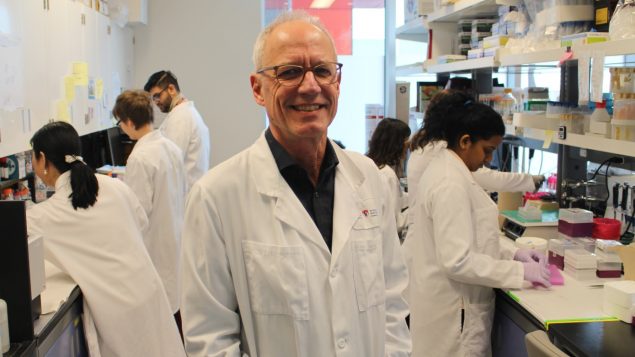
Professor Hugh Clarke, McGill University, Photo; Research Institute- McGill University Health Centre
The research was published in the science journal Current Biology under the title, Mammalian Oocytes Locally Remodel Follicular Architecture to Provide the Foundation for Germline-Soma Communication. (abstract HERE)
It’s likely confusing for the non-scientist, but one of the mysteries science had was how nourishment gets from surrounding tissue into the developing egg or oocyte. What was known is that nourishment is provided by tiny “feeding tubes” which are created in cells surrounding the egg and which penetrate a protective wall coating the egg itself
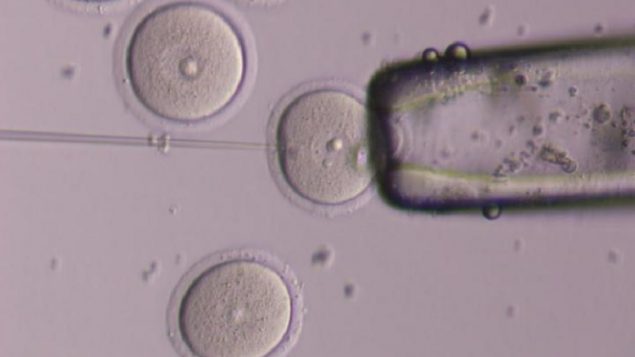
This image shows an egg being immobilized using a holding pipette on the right, while an injection pipette carrying the solution to be injected into the egg is pushed in from the left. The egg is surrounded by a thick wall. The feeding tubes growing out from the follicle cells have to punch their way through the wall to reach the egg.
Photo: Karl-Frédéric Vieux Hugh Clarke lab -RI-MUHC
What the research discovered is that the egg communicates to the cells through release of a chemical (growth-differentiation factor 9) which prompts the cells to create feeding tubes. As the egg develops and requires more nourishment the GDF-9 acts genetically on the follicle cells around the egg to create both more feeding tubes, and more of the cells.
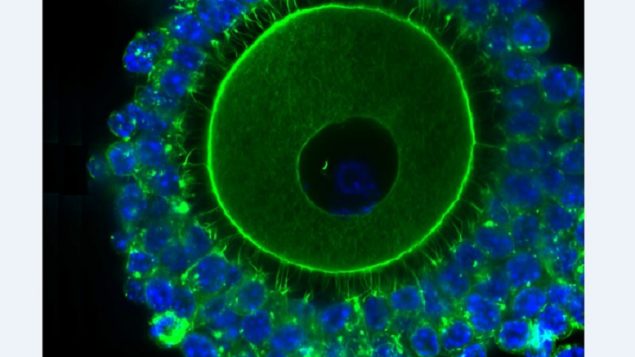
As the egg develops it communicates its nutritional need to surrounding follicle cells which increase in number and in the number of feeding tubes they create. In older mice there were fewer feeding tubes created. Further research is looking into how age affects the egg health and fertility. Photo” RI-MUHC
In the study led by then PhD student Stephany El-Hayek, they found that in the mouse models used, the eggs of older mice produced fewer of the feeding tubes.
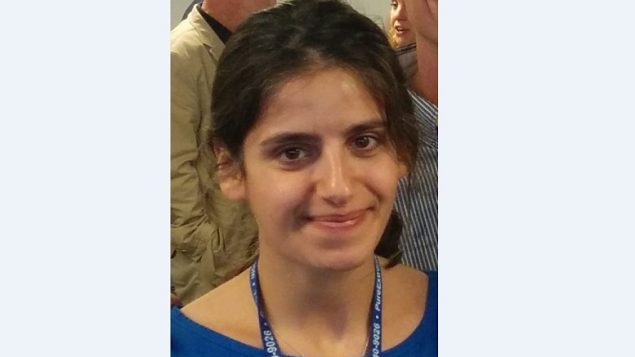
First author, (then) PhD student Stephany El-Hayek: Photo- supplied
Professor Clarke says this new information about the communication between egg and follicle cells and feeding tubes is a step in understanding the fertility and health of mammalian eggs, as in humans.
With this new understanding, research is continuing towards uncovering other aspects of egg development and fertility.
This could lead to eventual technology enabling the retention of the fertility of eggs, and enabling older women to remain fertile longer. Additionally it could eventually also lead to techniques to grow healthy eggs in the laboratory in an effort to preserve fertility in women who have cancer, or other health issue that could at present or in future, affect the health of her eggs.
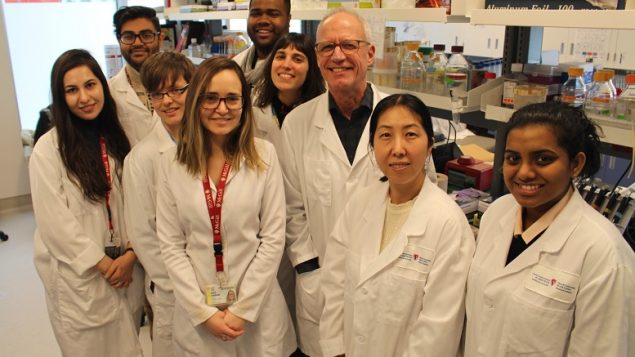
(L-R) Laleh Abbassi (study co-author), Sibat Anam, Johanne Grosbois, Karen Freire Carvalho, Karl-Frédéric Vieux, Sofia Granados Aparici, Hugh Clarke (supervising author), Qin Yang (study co-author) and Herthana Kandasamy, from the Child Health and Human Development Program, in their lab at the Glen site of the Research Institute of the McGill University Health Centre, Montreal, Canada. Photo: RI-MUHC
Funding for the research was provided for the Canadian Institutes of Health Research (CIHR), the Eunice Kennedy Shriver National Institute of Child Health & Human Development of the National Institutes of Health and the Natural Sciences and Engineering Research Council of Canada (NSERC).







For reasons beyond our control, and for an undetermined period of time, our comment section is now closed. However, our social networks remain open to your contributions.